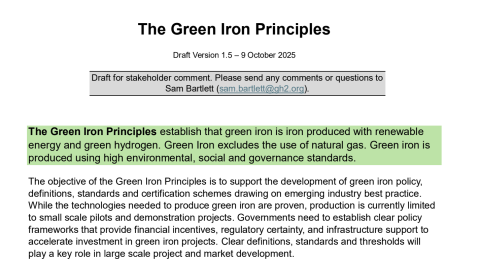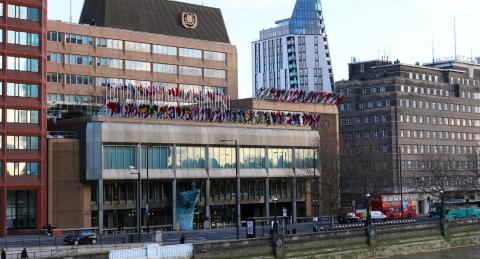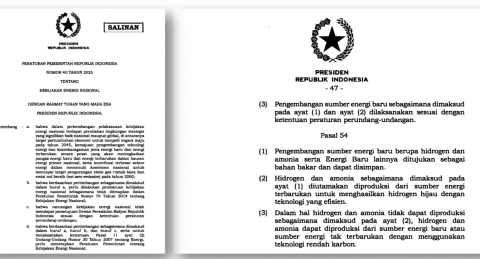Doubling down on green hydrogen production and infrastructure now
Dear all,
This month I took on role of CEO at the Green Hydrogen Organisation.
I’m enjoying getting down to work with our incredible team, board and partners to ensure GH2 is the global voice for sustainable and renewable green hydrogen. This is how we can take renewables further: to iron and steel; to chemicals and fertiliser; to shipping and aviation and to other places where it is really needed.
Our advocacy scrutinising the costs and climate credentials of blue hydrogen made from fossil gas will remain integral to our efforts, as will expanded work on challenging unsustainable biofuels and LNG. The Hydrogen Science Coalition asked some tough questions on blue hydrogen this week which we fully agree with.
There is a narrative which suggests we should put the brakes on green hydrogen development. That we should be content simply with using renewable energy to decarbonise sectors like cars or heating that can be electrified directly.
I disagree. We need to build green hydrogen production and infrastructure now. The sector needs support to scale, reduce costs and prepare to take its place as a key decarbonisation solution which is equally valuable for energy security and sustainable growth. This is why the International Maritime Organization’s recent delay on a decision to adopt its Net Zero Framework for shipping was so disappointing: we got delay when what we needed was a definitive demand signal for green hydrogen fuels (we’re working hard to ensure this is a delay rather than a defeat – see below).
China also disagrees and introduced new subsidies this month together with projections of three million tonnes of production in 2030. India is also going big, with its recent auctions for green ammonia catching global attention.
This progress should be celebrated, but such success needs to be replicated elsewhere, whether you are a green iron producer in Australia, a green fertiliser plant in Egypt, a chemicals company in Germany or a port putting infrastructure in place to accommodate green ammonia bunkering in Brazil.
Read more below on some of the key trends and stories we’re seeing on green hydrogen. Our programme for COP30 in Brazil is now live (see below) and next week we will update you on our objectives for this important summit.
Thanks for reading!
Joe Williams,
CEO, GH2
Final few days of consultation on GH2’s Green Iron Principles
Steelmaking is one of the world’s most carbon-intensive industries, responsible for around 7–9% of global emissions. As the world races to decarbonise, “green iron” — iron made using renewable energy and green hydrogen — has emerged as a key pathway to genuinely clean steel. Last week, the OECD published a detailed report on Green Iron opportunities in Australia. Two key challenges are addressing the demand side, to overcome the substantial green premium, and sharing the opportunities and risks between green iron exporters and green steel producers.
As RMI have noted, despite rising public and private interest in stimulating the market for green iron, there is no common definition at the product or project level. Without clear definitions and standards, it’s difficult for policymakers, investors, and consumers to distinguish between genuinely low-carbon iron and products that only partially reduce emissions. A shared definition is essential to build credible markets, guide investment, and accelerate industrial transformation.
GH2’s Green Iron Principles aim to change that. The draft framework sets out clear criteria for defining genuinely green iron: produced exclusively with renewable electricity and green hydrogen, excluding natural gas and upholding high environmental, social and governance performance. It builds on previous work by the World Steel Association, the International Organization for Standardization (ISO), the International Energy Agency (IEA) and the World Trade Organization (WTO) to support policy, certification, and investment in low-carbon iron production. The principles will be launched at COP30 in Belém.
To shape and refine these principles, GH2 is inviting stakeholders to send comments on the draft by COB Friday 31 October 2025. Please send your comments to Sam Bartlett at sam.bartlett@gh2.org.

Delay to IMO shipping decarbonisation vote is disappointing but work must continue
If adopted, the IMO’s Net Zero Framework would have set the first global emission targets for shipping and created a clear demand signal for green ammonia and methanol producers. Its postponement is therefore disappointing, but also gives an opportunity to use this extra time wisely: to strengthen definitions, refine reward mechanisms and build a stronger coalition. The vote was delayed, not derailed, and we now have a year to come back better prepared.

Indonesia’s NEP 2025: A policy win for the green hydrogen industry?
Indonesia’s new National Energy Policy (NEP 2025) takes a decisive step by stating that hydrogen and ammonia “shall preferably be produced from renewable energy sources.” A small phrase with a big impact. It makes green hydrogen made from renewable sources the default and preferred pathway for the country’s hydrogen future.
In practice, implementation will be the real test. The regulation still permits fossil-based hydrogen where renewables are not yet feasible, and the renewable energy target has been pushed to 2030. It is crucial for Indonesia to accelerate renewable deployment and adopt a robust Low-Carbon Hydrogen Standard. With effective follow-through, NEP 2025 can reinforce Indonesia’s green energy transition and deliver jobs, growth and energy security.

Green Hydrogen Organisation at COP30
Our COP30 schedule is now live. As part of the Global Renewables Hub, GH2 will be hosting and participating in sessions on green hydrogen for high emitting sectors like iron and steel, and the standards and financial solutions needed for them flourish. Explore the full programme below, and if you will be in Belém, do get in touch.

The Hydrogen Science Coalition asks tough questions on blue hydrogen
We agree with Hydrogen Science Coalition when it says “Blue hydrogen’s credibility depends on ambitious low-emissions hydrogen standards, to justify its expensive production and mitigate its risks compared to green hydrogen”. We made a number of similar points in our report “In Search of the Real Price of Blue Hydrogen"
European Parliament decides not to object to the Low Carbon Hydrogen Delegated Act
On 23 October the European Parliament voted not to object to the Delegated Act on Low-Carbon Hydrogen. The Delegated Act averted a worst-case scenario and puts some important restrictions on producing blue hydrogen from imported LNG (see this excellent analysis from Transport & Environment). However, areas like the default value for upstream methane leakage remain too generous and needs to be lowered. The Delegated Act will enter into force on 8 November unless the European Council objects.
Initial winners of Japan’s CfD scheme include a green hydrogen producer focused on the steel sector
Initial winners of Japan’s USD 20 billion Contracts for Difference scheme include a green hydrogen producer focused on the steel sector. Toyota Tsusho Corporation, Eurus Energy Holdings Corporation and Iwatani Corporation plan a green hydrogen project based on wind power to supply Aichi Steel which will be used to replace natural gas in heating furnaces for steel and iron.